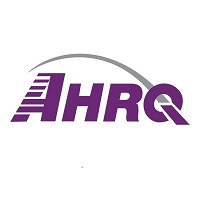 New Guide Helps Developers and Users of Digital Healthcare Technologies
New Guide Helps Developers and Users of Digital Healthcare Technologies
By Robert Otto Valdez, Ph.D., M.H.S.A., Kevin Chaney, M.G.S., and Bryan O. Buckley, Dr.PH, M.P.H., M.B.A., AHRQ
LinkedIn: Robert Otto Valdez, PhD MHSA
LinkedIn: Kevin Chaney
LinkedIn: Bryan O. Buckley, DrPH, MPH, MBA
LinkedIn: Agency for Healthcare Research and Quality
Just over 20 years ago, the Institute of Medicine released two seminal reports on the need to improve healthcare quality—one on healthcare disparities, another that emphasized the promise of digital healthcare technologies. Since then, healthcare technology has made significant strides. However, as the latest AHRQ report on healthcare quality and disparities shows, inequities persist.
AHRQ remains committed to funding and disseminating research that addresses inequities. In the last ten years, we’ve invested over $89 million across 153 research projects focused on reducing healthcare disparities. Last November, following an agency-sponsored stakeholder summit, AHRQ experts presented a research and action agenda for health services research to advance equity in care.
Advanced healthcare technologies can and should play a vital role as our nation looks for systematic remedies to reduce healthcare inequities and advance the well-being of all Americans. But this can only happen if those who create and use those technologies—developers, vendors, healthcare systems, payers, and providers—actively take steps to make it happen.
With that imperative in mind, and in light of National Minority Health Awareness Month, AHRQ is pleased to highlight a landmark addition to our inventory of digital healthcare resources: Digital Healthcare Equity Framework: A Practical Guide for Implementation.
Avoiding Harm With an Intentional Approach to Equity
In developing the guide, we understood that many viable solutions exist to improve healthcare delivery and outcomes. Some are designed for clinicians, and some for patients. Too often, however, digital healthcare technologies fail to address needs across patient populations. In some cases, these solutions have exacerbated healthcare disparities—and even created new ones.
The root causes vary, and the harm to patients—and their caregivers—is real. For example:
- Digital and social determinants of health—Patients without broadband internet may be unable to access web-based technologies.
- Inherent bias—Clinical decision support tools may contain biased algorithms that put marginalized populations at risk.
- Poor design—Technologies that lack proper accessibility features may fail to serve patients with disabilities.
Consider the first COVID-19 vaccinations. Public health leaders developed policies to ensure that people most vulnerable to severe illness got priority access. However, many patients over 65 struggled with pharmacies’ digital appointment systems. The web-based technologies made it more difficult for them to obtain potentially life-saving preventive care.
A Framework for Digital Healthcare Equity
While digital solutions hold immense potential, people and organizations have little guidance on considering equity when creating and using these technologies. AHRQ’s Digital Healthcare Research Division worked with Johns Hopkins University and the National Committee for Quality Assurance (NCQA) to address this gap.
A preliminary step to creating the guide was developing a digital healthcare equity framework. A literature review provided important information about existing frameworks. Conversations with more than 30 experts illuminated how the characteristics of patients and their communities, health systems, and healthcare technologies can influence healthcare equity. Understanding these characteristics is fundamental to building equity in each phase of the digital healthcare lifecycle.
Putting the Framework Into Practice
The new equity guide provides clear implementation steps to help developers and users implement the framework.
For example, developers should ensure that datasets used to train an artificial intelligence (AI)-powered application adequately represent intended patient populations. Providers or health systems seeking to acquire AI technologies and solutions should carefully review them for transparency and fairness. (For more on guarding against algorithmic bias, see our colleagues’ recent article in JAMA Network Open.)
The guide also emphasizes inclusivity, recommending ways to involve caregivers, patient advocates, policymakers, and others in design and implementation decisions. Technology vendors may choose to engage people from minority groups in the design process to establish a “chain of trust” that helps potential users feel comfortable with the product.
It Takes a Village: Digital Healthcare Equity and the “Last Mile” of Adoption
Failing to consider the needs and characteristics of people affected by a technological innovation can prevent its use by the very people it’s intended to help. In contrast, intentionally striving for an equitable solution can support adoption and real-world use—the storied “last mile” for digital healthcare technologies.
We’re pleased NCQA has included the guide as part of its broader “Equity in Action” efforts. It is a fitting complement to the organization’s excellent resources (e.g., tools, best practices, and foundational references) that can help organizations put equity into practice.
By empowering developers and users to consider healthcare equity outcomes, AHRQ’s new guide can ensure that future advancements in digital healthcare technologies do not worsen healthcare disparities.
Or, better yet, they can help close the gaps.
This article was originally published on AHRQ Views Blog and is republished here with permission.
